Crocodylus
Survivors of the dinosaur age, crocodiles are found in the warmer waters of
Africa, Asia, Australia, and America. Crocodiles are often confused with alligators,
but you can tell them apart by the shape of their tapered snout, and by the
way crocodiles’ lower teeth stick out when their jaws are closed.
Crocodiles vary in size. The saltwater crocodile measures up to 10 m (32 foot)
in length, while others are no more than 1 m (3 foot) long.
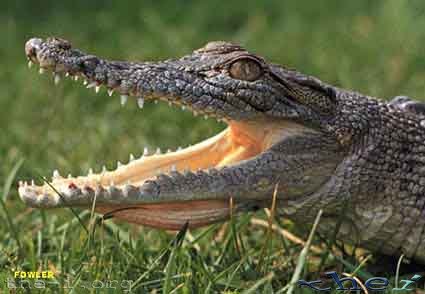
Subadult saltwater crocodile gaping - serves to cool a hot head, and also to threaten

Adult saltwater crocodile cruising in shallow water
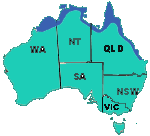
ESTUARINE (or SALTWATER) CROCODILE
Crocodylus porosus
Adults can venture out to sea and swim around coastlines or between islands.
Individuals have been found to travel over 1000 km (620 miles) by sea.Very
large animals will take almost anything including dingos, wallabies, shore
birds, other crocodiles, large reptiles, domestic animals, cattle and even
people. They will also eat carrion, being attracted from some distance to
reach it (even out of water).
Maximum size in males has been documented at around 7 metres (23 feet), and
over 1000 kg (2200 pounds) in weight, but 5 to 6 metres (16 to 20 feet) is
a more realistic maximum size. Maximum age is at least 70 years, perhaps over
100 years old.
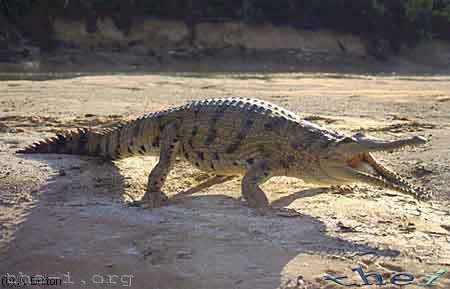
Gravid adult female freshwater crocodile defends herself aggressively
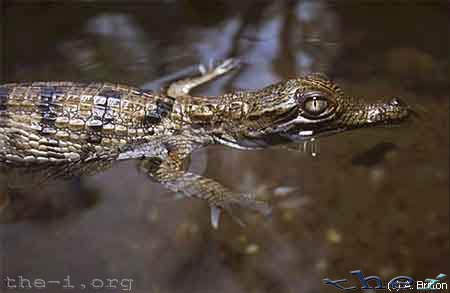
Hatchling freshwater crocodile watches for danger at the water surface
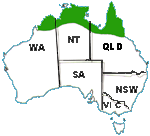
FRESHWATER CROCODILE
Crocodylus johnstoni
Freshwater crocodiles are generally found upstream of tidal influence, in lower
salinity water. They are actually fairly tolerant of saltwater, yet saltwater
crocodiles (Crocodylus porosus) aggressively outcompete them in most areas
where they occur. Main habitats include wetlands, rivers, creeks, freshwater
billabongs and swamps. They display fairly wide habitat preferences (clear
water, muddy, still, fast flowing, shallow or deep).
Size: males reach 2.4 - 3.0 m (53 kg, 116 pounds) or 8 - 10 feet maximum,
females reach 2 m (6.5 feet) maximum. Age: maximum rarely exceeds 50 years.
It takes 20 years for a juvenile to grow to its maximum size, although growth
will continue at a slower rate throughout life.
NOT my own pictures - Thanks to www.kingsnake.com/oz
 CSS Disabled or Not Supported Error
CSS Disabled or Not Supported Error